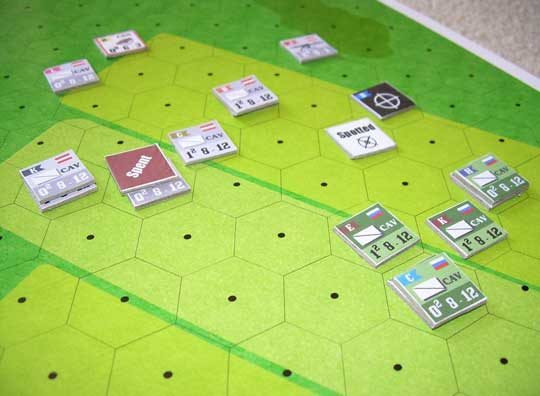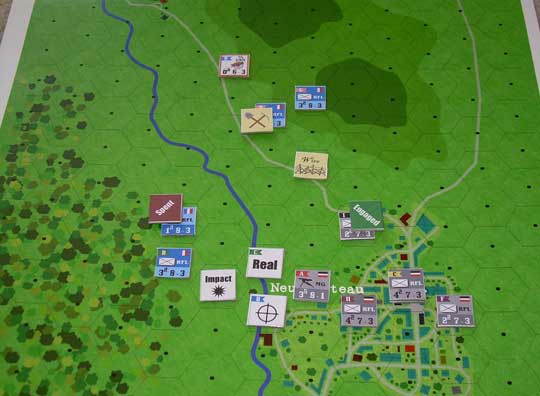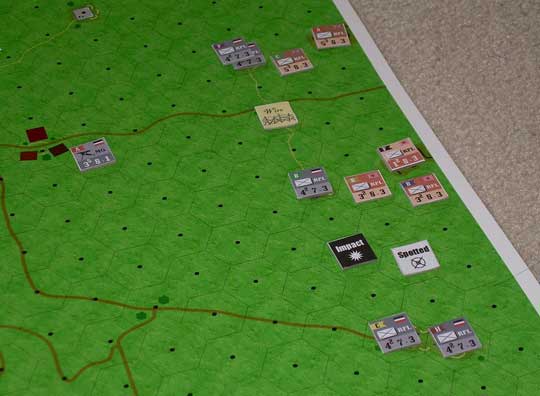
The Operations

Cavalry Eclipsed
With the onset of hostilities in the East, Austro-Hungarian forces moved into southern Poland while Russian forces moved into northern Galicia. Strategically, this created a tail-chasing spiral of troop movements. At the eye of the storm, Austria's 4th cavalry division faced Russia's 10th near Jaroslawice along the river Strypa at dawn on August 21st. After a full morning of artillery duels and infantry marches, the Austrians gave the Russians an opening to begin what both wanted - a mounted melee. While moving behind Hill 418, the 13th Austrian Lancers inadvertently offered their flank to Russian General Markoff. He immediately launched his 10th Lancers and 10th Dragoons into a Napoleonic charge at the target only 1,300 yards away. Austria's Count Kucinski was first to notice the attack, he gave the well rehearsed saber signal that set Major Vidale's squadron and others headlong into a counter charge with four schwarzlose machine guns firing in support.

Elan
In the Battle of the Frontiers, French troops inspired by countless lessons on elan (fighting spirit) attacked aggressively, although not necessarily with bayonets. The fighting at Neufchateau, Belgium exemplified the rash action and rude awakenings common to the opening weeks of WWI. Around 1130, the advance company the French 5th Colonial Brigade, following the sound of wagons, mounted a hill west of Neufchateau. From there they fired on dismounted German cavalry at 800 yards, spooking the horses. Then a French platoon sent to reconnoiter the town was blown back by heavy fire. Without proper reconnaissance, the French Brigade commander committed his reserve and twelve 75s. He had unknowingly launched an attack into the left flank of the German 18th Reserve Corps.

Rising Sun
On August 23, 1914 Japan declared war on Germany and set in motion plans to capture the German-controlled Chinese coastal port at Tsingtao. By October 31, Japan's 23,000-man 18th division had dug its way to the edge of the city along with 1,500 British allies as naval guns bombarded German batteries. About 4,000 German troops stood ready to defend their Kaiser's Asian prize. By the night of November 6, Japanese trenches were as close as 200 yards to German defenses. Under cover of darkness, General Yamada's 23rd brigade sent two companies of sappers forward to breach the wire.


